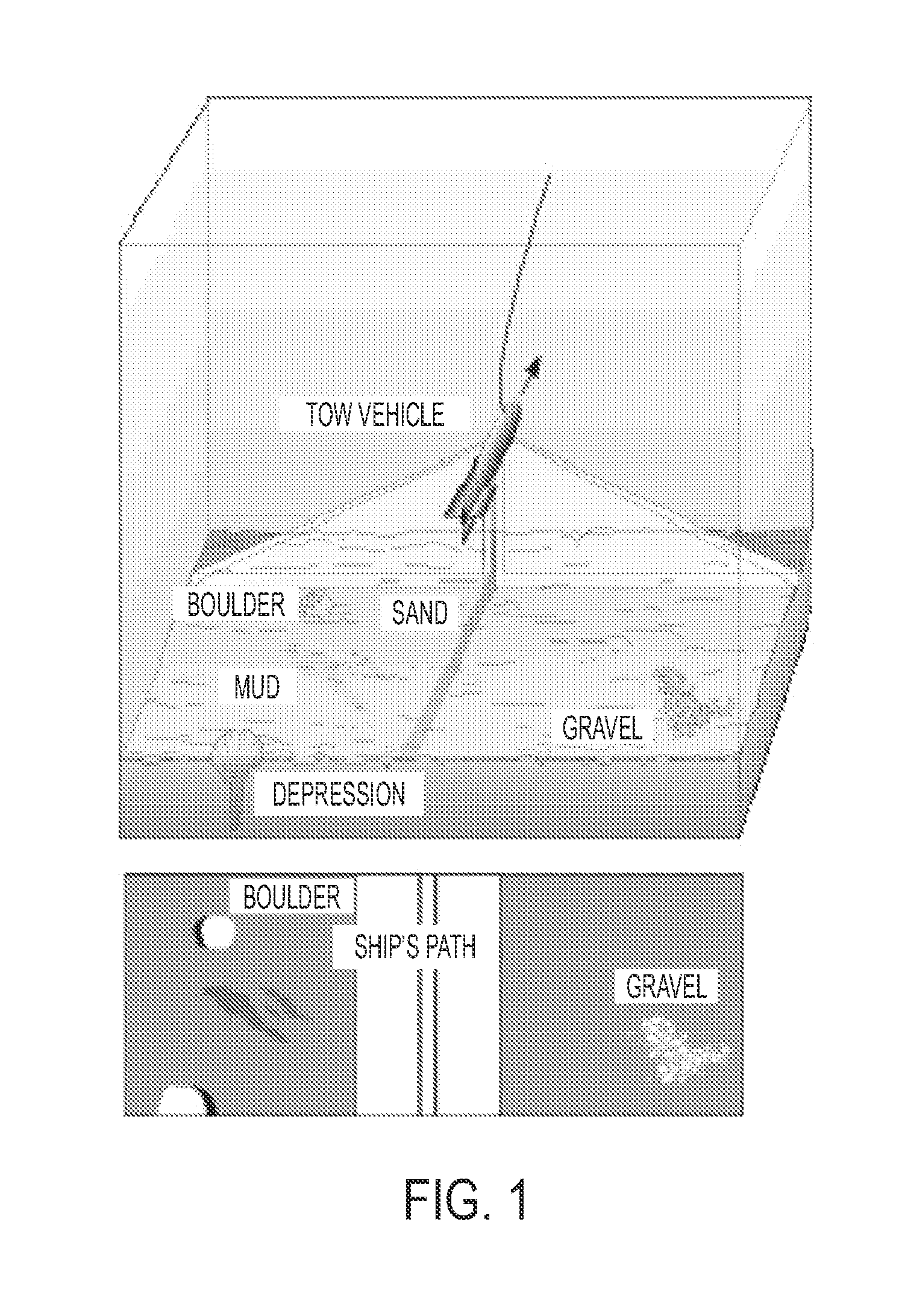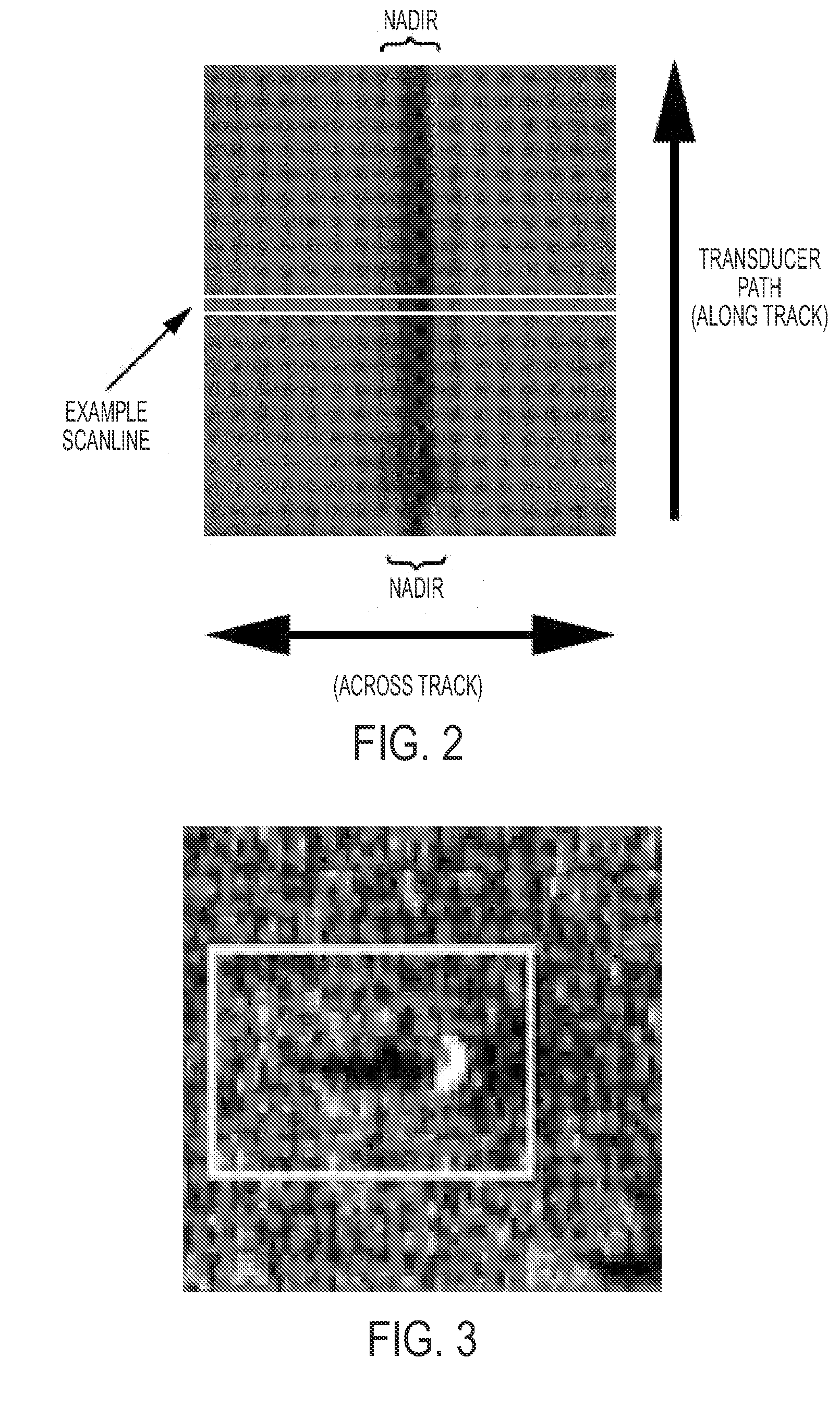Method and System for Real-time Automated Change Detection and Classification for Images
a real-time automatic change detection and image technology, applied in the field of real-time automatic change detection and image classification, can solve the problems of affecting the correlation between pixels in ssi, unable to image the area of the seabed directly below the fish, and unable to extract targets and features in sidescan imagery
- Summary
- Abstract
- Description
- Claims
- Application Information
AI Technical Summary
Benefits of technology
Problems solved by technology
Method used
Image
Examples
examples
[0154]Some specimens and results are shown in FIGS. 23 and 24. In one test, the survey area consists of five one-nautical mile long lines in shallow water (20 meters) and five two-nautical mile long lines in deep water (55 meters). Since the set sonar range for the sidescan sonars was 50 meters, the survey lines were spaced at 37.5 meters to allow for 100% overlap. Baseline surveys were conducted by each sonar in the shallow and deep areas, and the location of pre-existing contacts were determined. This information was used to populate a “historical” master contact database.
[0155]Ten objects representing mine shapes were then placed over the survey area, with five in the deep portion and five in the shallow portion. The objects were plywood boxes and lead pipes. ACDC-RT analysts missed one of each and found one of each. One possible reason for the inability to detect the missed objects was the placement of these missed mine shapes at the edge of the survey area.
[0156]Change detectio...
PUM
 Login to View More
Login to View More Abstract
Description
Claims
Application Information
 Login to View More
Login to View More - R&D
- Intellectual Property
- Life Sciences
- Materials
- Tech Scout
- Unparalleled Data Quality
- Higher Quality Content
- 60% Fewer Hallucinations
Browse by: Latest US Patents, China's latest patents, Technical Efficacy Thesaurus, Application Domain, Technology Topic, Popular Technical Reports.
© 2025 PatSnap. All rights reserved.Legal|Privacy policy|Modern Slavery Act Transparency Statement|Sitemap|About US| Contact US: help@patsnap.com



